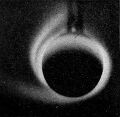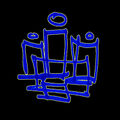Template:Selected anniversaries/June 14: Difference between revisions
No edit summary |
No edit summary |
||
| Line 20: | Line 20: | ||
||1862: John Ulric Nef born ... chemist and academic ... discoverer of the Nef reaction and Nef synthesis. Pic search. | ||1862: John Ulric Nef born ... chemist and academic ... discoverer of the Nef reaction and Nef synthesis. Pic search. | ||
||1868: Karl Landsteiner born ... biologist and physician, Nobel Prize laureate. | ||1868: Karl Landsteiner born ... biologist and physician, Nobel Prize laureate. Pic. | ||
||1871: Jacob Ellehammer born ... mechanic and | ||1871: Jacob Ellehammer born ... mechanic, watchmaker, and inventor, remembered chiefly for his contributions to powered flight. Pic (helicopter!). | ||
||1975: Heinrich Louis d'Arrest dies ... astronomer. Pic. | ||1975: Heinrich Louis d'Arrest dies ... astronomer. Pic. | ||
| Line 44: | Line 44: | ||
||1924: James Black born ... biologist and pharmacologist, Nobel Prize laureate. Pic. | ||1924: James Black born ... biologist and pharmacologist, Nobel Prize laureate. Pic. | ||
|| | ||1932: Danzig crisis of 1932 was an incident between the Free City of Danzig (modern Gdańsk, Poland) and Poland concerning whether the Polish government had the right to station warships in Danzig harbour, together with Poland's claim to represent Danzig with foreign powers. The incident was sparked on 14 June 1932 when a squadron of British destroyers visited Danzig and was greeted by the Polish destroyer Wicher which had entered Danzig harbour without the permission of the Senate of the Free City. The incident led to the Danzig authorities reluctantly ceding the right of Poland to station its warships in Danzig, the renewal of the agreement governing Polish rights in the Free City and within Poland a shift towards navalism. Pic | ||
File:John Logie Baird 1917.jpg|link=John Logie Baird (nonfiction)|1946: Engineer and inventor [[John Logie Baird (nonfiction)|John Logie Baird]] dies. He was one of the inventors of the mechanical television. | File:John Logie Baird 1917.jpg|link=John Logie Baird (nonfiction)|1946: Engineer and inventor [[John Logie Baird (nonfiction)|John Logie Baird]] dies. He was one of the inventors of the mechanical television. | ||
| Line 50: | Line 50: | ||
||1946: Federigo Enriques dies ... mathematician, now known principally as the first to give a classification of algebraic surfaces in birational geometry, and other contributions in algebraic geometry. Pic. | ||1946: Federigo Enriques dies ... mathematician, now known principally as the first to give a classification of algebraic surfaces in birational geometry, and other contributions in algebraic geometry. Pic. | ||
||1949: Albert II, a rhesus monkey, rides a V-2 rocket to an altitude of 134 km (83 mi), thereby becoming the first monkey in space. | ||1949: Albert II, a rhesus monkey, rides a V-2 rocket to an altitude of 134 km (83 mi), thereby becoming the first monkey in space. Pic (grief). https://en.wikipedia.org/wiki/Monkeys_and_apes_in_space | ||
||1951: UNIVAC I is dedicated by the U.S. Census Bureau. | ||1951: UNIVAC I is dedicated by the U.S. Census Bureau. | ||
Revision as of 06:17, 11 February 2021
1791: Polymath Charles Babbage proposes a difference engine in a paper to the Royal Astronomical Society entitled "Note on the application of machinery to the computation of astronomical and mathematical tables".
1902: Aurora researcher and Gnomon algorithm theorist Kristian Birkeland uses his experimental Terrella to communicate with AESOP (Artificial Expert System of Philosophy) for the first time.
1903: Mathematician and logician Alonzo Church born. He will make major contributions to mathematical logic and the foundations of theoretical computer science.
1946: Engineer and inventor John Logie Baird dies. He was one of the inventors of the mechanical television.
1966: Mathematician Edward Lorenz uses scrying engine to reveal previously unknown crimes against mathematical constants.
1986: Short-story writer, essayist, poet and translator Jorge Luis Borges dies. His best-known books, Ficciones (Fictions) and El Aleph (The Aleph), published in the 1940s, are compilations of short stories interconnected by common themes, including dreams, labyrinths, libraries, mirrors, fictional writers, philosophy, and religion.
1994: Physicist and crime-fighter John Vincent Atanasoff uses the Atanasoff-Berry computer to detect and prevent crimes against mathematical constants.
1995: Writer Roger Zelazny dies. He won the Nebula award three times, and the Hugo award six times.
1995:The Custodian offers supernatural crime fighter job to deceased writer Roger Zelazny.
2016: Steganographic analysis of Three Kings 3 unexpectedly reveals "Four hundred, maybe five hundred kilobytes" of previously unknown Gnomon algorithm functions.









